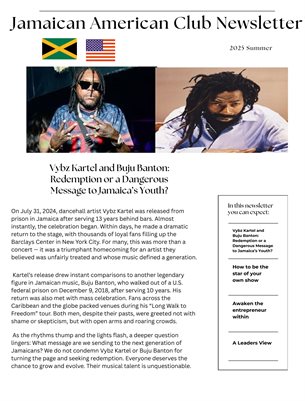I was reading Deborah Gabriel’s book “Layers of Blackness” – Colourism in the African Diaspora, and the first thing that came to mind as I read, was does colourism really exist today?
Deborah Gabriel, apart from being the author of ‘Layers of Blackness’ is a teaching professional and a journalist. The book was inspired by a feature Deborah wrote about skin bleaching in 2005, which followed a documentary about skin bleaching by a black female filmmaker and by the failure of mainstream writers to discuss the psychological and historical factors associated with skin bleaching. The primary aim of her book, despite its connotations of shades of colour is, she says: “to unite, not divide people of African descent”.
The thing is, from my perspective, the word ‘colourism’ is a divisive word. For those of you who are unfamiliar with the term, it is, in blunt terms, when someone says “no badda tawk to him – him too black” or, “don’t go out into the sun my dear, you will get too dark!” Colourism (according to Wikipedia) is a form of discrimination in which human beings are afforded differing social treatment based on skin colour. The preference often gets translated into economic status because of opportunities at work. Colourism can be found across the world and the term is generally used for the phenomenon of non-white people discriminating within their own ethnic group!
Yes, in plain talking it means blacks discriminating against blacks because of their colour, which is why many of the darker-skinned people have opted for bleaching creams to make their complexions lighter. I read on the website that in India, Fair & Lovely, which is a bleaching cream, have cornered 70% of the bleaching cream market! And there is a video on the internet made in Egypt which claims “if you want to be successful and attractive, bleach your skin white”. It is this kind of misrepresentation that gave rise to many tragic mulattos in the early 1900s. How many of you saw “Imitation of Life” by Fredi Washington who played Peola, a tortured self-hating bi-racial girl who said to her Negro mother: “Don’t come for me. If you see me in the street, don’t speak to me. From this moment on I am white, not coloured. You have to give me up!” Wanting to live as white because she was tired of being treated as a second class citizen ‘that is being treated like a 1930s black American’. She passed as white and begged her mother to understand, which along with the 20th century advert cited above, implies that success comes with skin colour. So in answer to my initial question, does colourism still exist today – yes, sadly it seems that it does!
In order to understand the present, we need to refer to the past, so let’s have a look at the possible reasons for colourism. Most of us know that light skinned Negroes were the ones kept in the house, while dark skinned Negroes were made to work in the fields. Did this imply that the light-skinned slaves were more superior to the dark-skinned or was it because the mulattos (as mixed-race were called back then) were the product of rape and therefore the slave masters felt some paternal loyalty to their offspring? Did the perceived preferential treatment adversely affect dark-skinned female slaves, or could it be that because the light-skinned slaves were remnants of their offspring,, they were happy to see them being given an opportunity to enjoy a marginally better lifestyle? We will never know. All we know is how it has been translated to us through the centuries, that lighter is brighter and blacker is slacker – but is that true?
There is an argument in the United States that on average, African-Americans score 7 to 15 points lower than European-Americans on IQ tests. Many conservatives believe this is because blacks are genetically inferior to whites. But liberals believe that the IQ gap is the result of nearly three centuries of slavery and yet another 130 years of segregation and institutionalized racism.
Hume, Krieger, Sidney & Coakley and many others have tried to state that the lighter you are, the higher your IQ level. Have you ever heard such a load of tosh!? If that is the case, why is Professor Geoffrey Palmer, DSc, OBE whose skin tone is dark, one of three people in the UK who has a Doctor of Science? A Doctor of Science (DSc) for those of you who do not know, is conferred on a member of the university who has a proven record of internationally recognised scholarship. Professor Geoffrey Palmer OBE is such a member and as such, was required to submit a selection of his publications on Grain Science, to the board of his faculty, which decided that he merited this accolade, along with Dame Jocelyn Bell Burnell, a white Scientist and radio astronomer who discovered what turned out to be neutron stars, also called pulsars.
When I interviewed Professor Geoffrey Palmer who is the author of “The Enlightened Abolished” on my radio show in March of this year, he told me that the reason he accepted the OBE the day before his mother died (apart from his mother telling him he should) was to show that he was as competent and as intelligent as anyone else on the planet, and that is of course regardless of colour (shade or otherwise)!
So let’s put this colourism to bed and end it with the famous words of Marcus Garvey:
The appeal I now make is: "For God's sake, you men and women who have been keeping yourselves away from the people of your own African race, cease the ignorance; unite your hands and hearts with the people Africa, and let us reach out to the highest idealism that there is in living, thereby demonstrating to others, not of our race, that we are ambitious, virtuous, noble, and proud of the classification of race.
Monday, March 1, 2010
Subscribe to:
Posts (Atom)




